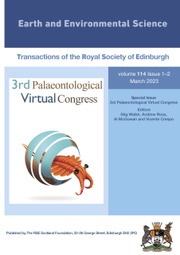No CrossRef data available.
Article contents
XXIV.—On the Discharge of Electricity through Oil of Turpentine
Published online by Cambridge University Press: 14 March 2016
Extract
At the beginning of this session we proceeded to apply the method of measuring large differences of potential described in former papers, to the investigation of the disruptive discharge through liquid dielectrics. We have now obtained some results for oil of turpentine.
A vessel capable of holding the liquid, and at the same time of forming an electrode, was constructed by fixing on a metal plate to one end of a hollow glass cylinder of diameter slightly less than that of the receiver of the air-pump. The vessel was placed on a metallic support, so as to be in conducting connection with the metal parts of the air-pump, and with the earth. The other electrode, which was either a circular disc, a spherical ball, or a conical point, was screwed on to the brass rod passing through the stuffing-box on the top of the receiver, and was thus capable of being adjusted to various heights in the turpentine. The bottom of the vessel is 16·7 centimetres, and the brass disc, which commonly formed the upper electrode, is 10 centimetres in diameter, and 4 millimetres thick.
- Type
- Research Article
- Information
- Earth and Environmental Science Transactions of The Royal Society of Edinburgh , Volume 28 , Issue 2 , 1878 , pp. 673 - 677
- Copyright
- Copyright © Royal Society of Edinburgh 1877


